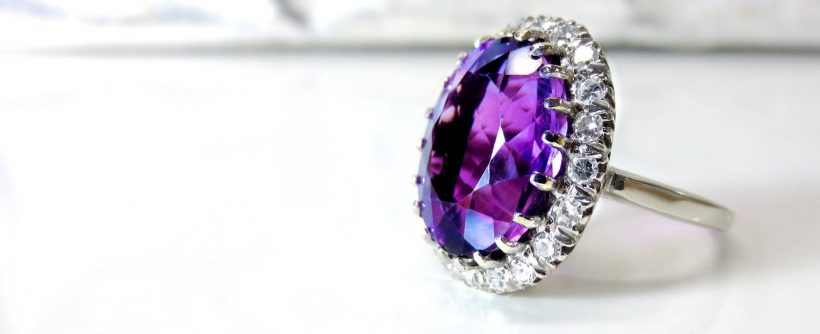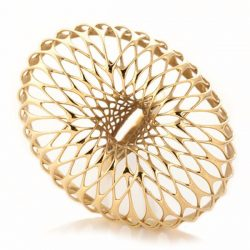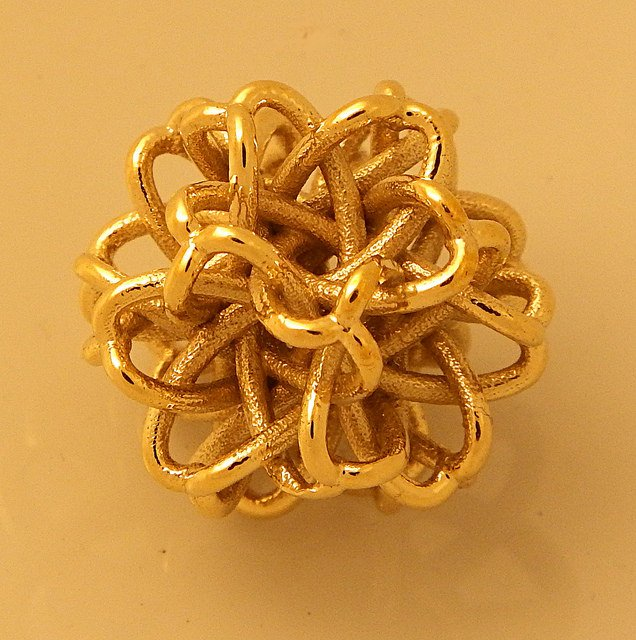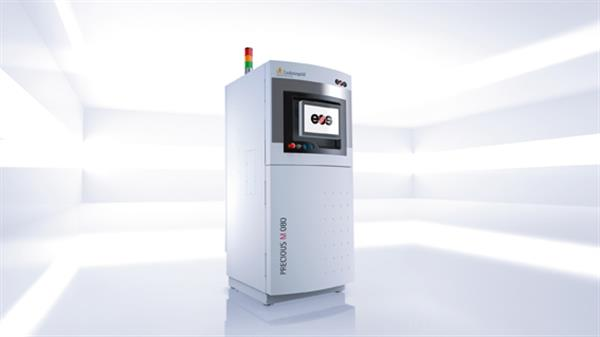
A recent study by SmarTech has valued the precious metals materials market in additive manufacturing at $250 million by 2028. This shows that While the 3D printing still remains relatively in its early stages of development, it is an area that is steadily growing. 3D printing precious metals like gold, silver or platinum is ideal for low-batch, high-end applications with high levels of customisation and design freedom. With this in mind, industries like jewellery, watchmaking, dental and electronics can benefit immensely from 3D printing with these materials.
We’ll take a look at how 3D printing with precious metals works, limitations of the technology, and how the applications could evolve in the future.
Direct and Indirect Manufacturing

There are two main approaches to 3D printing precious metals: direct and indirect manufacturing. With indirect manufacturing, 3D printing is used to produce tools like dies and moulds for traditional processes. Direct 3D printing, on the other hand, refers to the creation of parts straight from the design.
Indirect manufacturing with precious metal involves 3D printing a wax pattern to be used in investment casting. Stereolithography (SLA) is typically used to create such patterns from castable, wax-like resins. During this process, a UV light laser travels over a layer of liquid photopolymer (resin), selectively solidifying the material. When the wax pattern is complete, it is then covered in a heat-resistant material such as plaster, and placed into an oven where the wax is melted, leaving only the hardened plaster mould. This process is also called “lost-wax”. The molten precious metal is then poured into the mould, filling the space left by the wax.
This process is particularly beneficial for the jewellery industry, as it helps to save time and effort associated with hand carving models, whilst allowing jewellery makers to design highly intricate, custom jewellery pieces. Currently, the 3D printer market offers a wide range of SLA machines well-suited to the production of wax patterns.
In contrast, with direct 3D printing, manufacturers can create precious metal parts directly from CAD files. The two most commonly used 3D printing technologies for direct 3D printing with precious metals are Direct Metal Laser Sintering (DMLS) and Material Jetting.

A closer look at direct manufacturing
Direct manufacturing is still in its infancy compared to indirect 3D printing. Although Direct Metal Laser Sintering (DMLS) is one of the most common additive manufacturing methods for producing metal parts, the laser sintering of precious metal powders has become possibly only recently, in part because of the intrinsic difficulties of working with these materials.
Precious metal powders are also costly to research and develop. Additionally, many precious metals, like gold and silver, are highly reflective and thermally conductive. This means that typical AM lasers are unable to thoroughly melt the material and create a homogeneous part. However, in spite of the challenges, a few AM manufacturers have developed machines capable of processing precious metal materials using DMLS.
Machines on the market
For example, German manufacturer EOS, in partnership with UK-based precious metals company Cooksongold launched the EOS PRECIOUS M 080 3D printer in 2014. With this system, a wide range of precious metal powder alloys can be used, from gold and silver to platinum and palladium alloys.
-

The EOS PRECIOUS M 080 3D printer
Similarly, jewellery company Boltenstern used the PRECIOUS M 080 to create its “Embrace” jewellery collection, 3D printed in gold and platinum. The technology enabled unachievable before levels of customisation whilst creating pieces with complex designs. The collection included jewellery pieces like bracelets, earrings, rings, necklaces and cufflinks.
Italy-based machinery manufacturer Sisma introduced the mysint100 system for 3D printing with precious (bronze, gold and several precious metal alloys) and non-precious metal powders in 2014. And in 2016 the company broadened its 3D printer portfolio with the bigger mysint300 machine, suitable for producing small series and medium-sized pieces.
3D printing platinum
3D printing platinum is a particularly interesting use case. The material is notoriously difficult to cast because of its high melting temperature and high reactivity with the crucible and investment mould materials. This results in high production costs, the need for specific equipment and frequent defects in final products, making laser sintering a better alternative to casting. Precious metals company Cooksongold has even estimated that the density of 3D printed platinum can reach over 99.9%, whereas casted platinum is 99.2% dense.
Dentistry
Within the dental industry, 3D printing precious metals can be used for dental restorations, creating small batches of crowns, inlays and onlays. For example, Argen, which specialises in dental digital technology, uses Concept Laser machines for metal 3D printing with high noble (gold and palladium alloy), noble (palladium), and non-precious alloys, producing fully dense, custom dentures on demand.
Electronics
Material Jetting is a completely different additive manufacturing process from DMLS, involving the use of printheads that deposit droplets of material layer by layer. These droplets are then solidified with a UV-light.
Where precious metals are concerned, Material Jetting is typically used with highly conductive silver or gold inks to 3D print electronic devices like antennas, PCB prototypes, circuitry, and sensors. Israeli company Nano Dimensions is pioneering this field with its DragonFly 2020 Pro 3D Printer. With the proprietary inkjet deposition system, the DragonFly 2020 Pro is capable to print with conductive (silver) and dielectric inks simultaneously, creating electrically functional parts.
Another major player in the field of 3D printed electronics using precious metals is Optomec. The US company has developed a wide array of precious (gold, platinum, silver, copper) and non-precious metal inks specifically for the line of its Aerosol Jet printers. The newest 3D printer in the line – the Aerosol Jet HD – entered the market earlier this year. The underlying technology involves inks’ atomiser, which creates the aerosol mist, subsequently deposited on the substrate with the help of aerodynamic focusing.
Electronic components, from resistors to antennas and sensors, can be made using the Aerosol Jet technology. For example, researchers from Carnegie Mellon University was able to 3D print high-temperature strain gauges using the technology. Strain gauges are sensors used to measure the strain of a material or structure, helping to detect any structural problems in a component. The strain gauges were made from silver nanoparticles and demonstrated a superior performance than commercially available counterparts and can be particularly beneficial for aerospace and other high-performance industries like nuclear and power generation systems.
Looking to the future
Although indirect 3D printing remains the more popular option when working with precious metals, industries from jewellery to electronics are steadily recognising the benefits of directly 3D printed precious metals. However, the barriers to wider adoption exist – from expensive equipment to the difficulties of developing suitable precious metal powders and inks.
Nevertheless, looking further ahead, we will see more directly 3D printed jewellery and dental products, as the trend for more customisation and faster time-to-market continue. Furthermore, more research is being conducted in the field of precious metals inks. We envision that 3D printed electronics could revolutionise many high-performance industries with 3D printed sensors and antennas, the next step in the evolution of the Internet of Things.